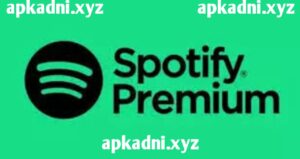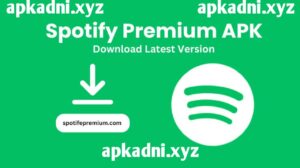Table of Contents
ToggleIntroduction
The music business has changed dramatically over the years, with streaming services—of which Spotify is the most well-known and prominent platform—taking the place of more conventional means of purchasing CDs or downloading MP3s.
With more than 600 million users worldwide, it provides an unmatched listening experience for those who want to enjoy the newest singles, timeless favourites, or obscure musicians through its vast collection of songs, podcasts, and audiobooks.
To learn more about Spotify’s distinctive history and characteristics, examine its ascent to worldwide supremacy, special features, influence on the music business, and upcoming improvements.

History
Daniel Ek and Martin Lorentzon created it in Stockholm in 2006 with the goal of preventing music piracy by providing a user-friendly, reasonably priced, and lawful streaming service.
- It was formally introduced in a few European nations in 2008.
- An important milestone was reached in 2011 when the business opened operations in the United States.
- The business extended its worldwide presence to Asia, Latin America, and the Middle East between 2013 and 2015.
- Spotify debuted on the New York Stock Exchange in 2018.
- Podcasting and audiobooks have grown significantly since 2020, thanks to the introduction of new services like it Wrapped and AI-driven recommendations.
Currently the biggest music streaming service globally, it is accessible in more than 180 nations.
How Spotify Works
With Spotify’s streaming business model, customers may listen to millions of songs from its extensive catalogue without having to download any files, enabling them to enjoy music without any ownership.
Freemium vs. Premium
Spotify operates on a freemium model, providing two distinct account types:
- Free Account (Ad-supported)
- All tracks are available; however, there are commercials.
- Because there are fewer skips, the audio quality is worse.
- No offline downloads
- Premium Account (Paid subscription)
- Ad-free experience
- Unlimited skips and high-quality audio
- The function provides high-quality audio and an infinite number of skips.
To accommodate different user groups, it provides a range of premium memberships, such as individual, family, duo, and student.
Key Features
✔️ Vast Music Library
With more than 100 million tracks and 5 million podcasts, it provides a huge music selection to suit a wide range of interests and inclinations.
✔️ Personalized Playlists & Recommendations
Spotify uses AI algorithms to develop a number of features.
- Discover Weekly—The history of the listener is used to produce new tunes.
- Release Radar—The latest releases from our favourite artists.
- Daily Mixes—customised music selections for various moods.
✔️ Offline Listening & Downloads
Spotify Premium is perfect for travel or low-data scenarios since it enables users to download and listen to music without an internet connection.
✔️ Collaborative Playlists
Users may curate music collectively in a fun way by adding tracks to shared playlists they build with friends.
✔️ High-Quality Audio
It offers different audio settings:
- Low (24 kbps)
- Normal (96 kbps)
- High (160 kbps)
- Very High (320 kbps) (Premium only)
Spotify for Artists
Spotify is a useful tool for musicians as well as a platform for listeners.
How Artists Distribute Music
To make sure their songs are heard on it and other platforms, musicians release their music through distributors such as TuneCore, DistroKid, or CD Baby.
Revenue Model for Artists
Spotify generates between $3,000 and $5,000 for one million streams, paying artists between $0.003 and $0.005 for each stream.
Wrapped for Artists
Every year, Spotify Wrapped gives artists useful data to improve audience interaction, including total streams, top listeners, and other metrics.






